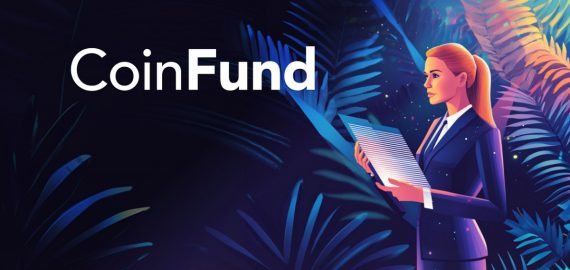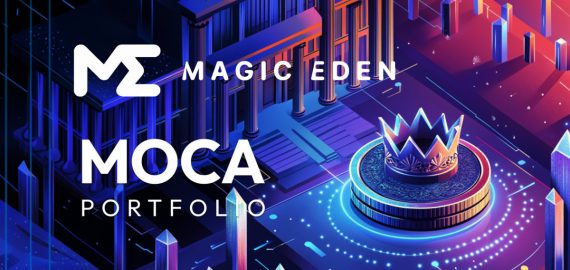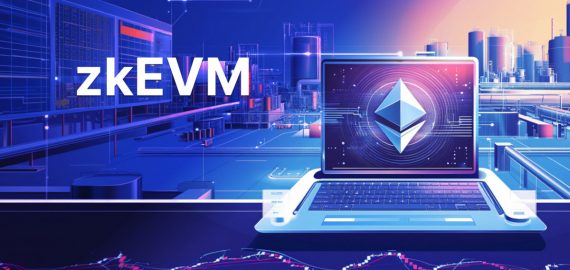Breaking Chains, Building Bridges: How Modular Blockchain Architecture is Solving Scalability and Paving the Way for Mass Adoption in 2024


In Brief
Modular design strategy revolutionizes distributed ledger sector, offering flexibility, scalability, and specialization. Ethereum’s rollup concept and Merge process fuel this trend.

The modular design strategy, which divides blockchain operations into distinct pieces, is causing a revolution in the distributed ledger sector. In comparison with conventional monolithic blockchain systems, this trend—which gained pace in 2023 and is expected to continue in 2024—offers more flexibility, scalability, and specialization.
Ethereum originated the notion of modular architecture in blockchain technology with its rollup idea. This trend has been fueled by Vitalik Buterin’s vision of an Ethereum future that is centered around rollups. The Ethereum modular architecture was further cemented through the Merge process, opening the door for the general use of modular blockchain architectures.
Three key trends are shaping modularity in the distributed ledger sector:
Data Availability (DA) Layer Modularity
Modular DA solutions are being pushed by projects like NEAR, Avail, EigenDA, and Celestia. With these advancements, scalability problems should be avoided as data availability performance is enhanced and interoperability with different blockchain ecosystems is preserved.
Sovereign Rollups
Projects like Dymension, Initia, and Saga are at the forefront of this movement, although security concerns remain a challenge. The rise of sovereign rollups is closely tied to the development of external DA and consensus solutions.
Rollup-as-a-Service and Appchains
Software and infrastructure are made available by RAAS to make layer-2 blockchain development easier. While initiatives like Saga, AltLayer, and Dymension are proposing novel concepts like RollApps and Chainlets in the Cosmos ecosystem, major players like Arbitrum and Optimism are spearheading this movement. This tendency is especially important since it makes it easier for new initiatives to get started and encourages the creation of blockchains with specialized applications.
While modular blockchains offer numerous advantages, they also face challenges:
- Composability problems across various ecosystem components;
- Problems with security, particularly with regard to initiatives that depend on outside security providers;
- A rise in technical complexity;
- Fragmentation of liquidity along several chains.
Here’s what experts participating in the Hack Seasons Conference shared on this topic:
Vince Yang, CEO of zkLink
“The modular thesis of blockchain is very interesting. We’ve seen many teams building modular solutions. For example, there are modular DA (Data Availability) solutions like Celestia, modular sequencing solutions with privacy-preserving enhancements like Espresso, mempool-encrypted solutions like Redacted, and modular proof aggregation solutions.
People are taking components of the whole blockchain architecture, decoupling them, and building stronger versions that can be used by other protocols. Instead of building everything in-house, we now have the choice to utilize third-party solutions and integrate other modular solution providers.
We’re seeing rapid development in the modular space. There are also Rollup-as-a-Service providers, which are like supermarkets for modular solutions. They integrate various modular solution providers and give you the option to choose any component. This makes launching a new chain super easy.”
Cecilia Hsueh, co-founder and CEO of Morph
“Definitely, in the early stages of any industry, single companies need to develop everything – infrastructure, technology, the whole system. Each part needs huge investments that small and medium companies cannot afford. Gradually, more modularity happens, and more vendors offer different parts, lowering the entry barrier for smaller companies to build at low costs.
It will be the same for blockchain. Five or ten years ago, you needed to build everything from scratch for applications or chains. But now, modularity is happening, and everyone can build layer 2s through modularity. This will lower the entry barrier for chain businesses and benefit end users and developers with more competition.”
Shubham Bhandari, the Ecosystem Head at Manta Network
“When we started, our major focus was on the modular side rather than the monolithic. If you see the current state and things Manta is working on, it’s a modular stack where we have the transactions minted on Manta Network.
Some transactions are sent to Celestia. This is how the ecosystem and the modular things work, instead of pushing data directly to Ethereum or keeping it by yourself. That’s how we are planning to do it, and we are also planning to make it more compatible and better in the future.”
Gnana Lakshmi, a Developer Advocate at the Starknet Foundation
“We can discuss modularity and its current state. From a tech and decentralized permission network perspective, our goal has always been to keep the network as modular as possible. This approach gives users the flexibility to choose among multiple options.
One of the key components of our modular strategy is Volition, which allows users to select their preferred data availability (DA) option. Users can choose between the DA on Ethereum, Starknet’s native DA, or other options that are still under discussion. We are also collaborating with partners in the ecosystem, such as Avail, to enhance modularity and simplify the integration of different components.
In a modular system, you have a DA layer, an execution layer, and a settlement layer. Our aim is to keep these layers as independent and interchangeable as possible, providing users with various choices to fit their specific needs.
The recent Bitcoin announcement, although not strictly under the modularity umbrella, aligns with this plug-and-play philosophy. By allowing users to settle on Bitcoin, we add another layer of modularity, giving builders the flexibility to choose the most suitable components for their use cases.
Modularity is about having interchangeable components that users can mix and match. In this context, offering a Bitcoin settlement layer enhances our modularity by providing another option for users.
In terms of modularity and interoperability, we are actively collaborating with different projects to improve these aspects. We already have basic interoperability components like bridges, but we are continuously working to enhance these capabilities. Our goal is to make it as easy as possible to integrate Starknet with other networks, ensuring seamless interoperability.
Overall, a lot is happening in the space of modularity and interoperability. We are committed to working with various layers and components to keep improving and expanding Starknet’s modular capabilities.”
Disclaimer
In line with the Trust Project guidelines, please note that the information provided on this page is not intended to be and should not be interpreted as legal, tax, investment, financial, or any other form of advice. It is important to only invest what you can afford to lose and to seek independent financial advice if you have any doubts. For further information, we suggest referring to the terms and conditions as well as the help and support pages provided by the issuer or advertiser. MetaversePost is committed to accurate, unbiased reporting, but market conditions are subject to change without notice.
About The Author
Victoria is a writer on a variety of technology topics including Web3.0, AI and cryptocurrencies. Her extensive experience allows her to write insightful articles for the wider audience.
More articles

Victoria is a writer on a variety of technology topics including Web3.0, AI and cryptocurrencies. Her extensive experience allows her to write insightful articles for the wider audience.

















































